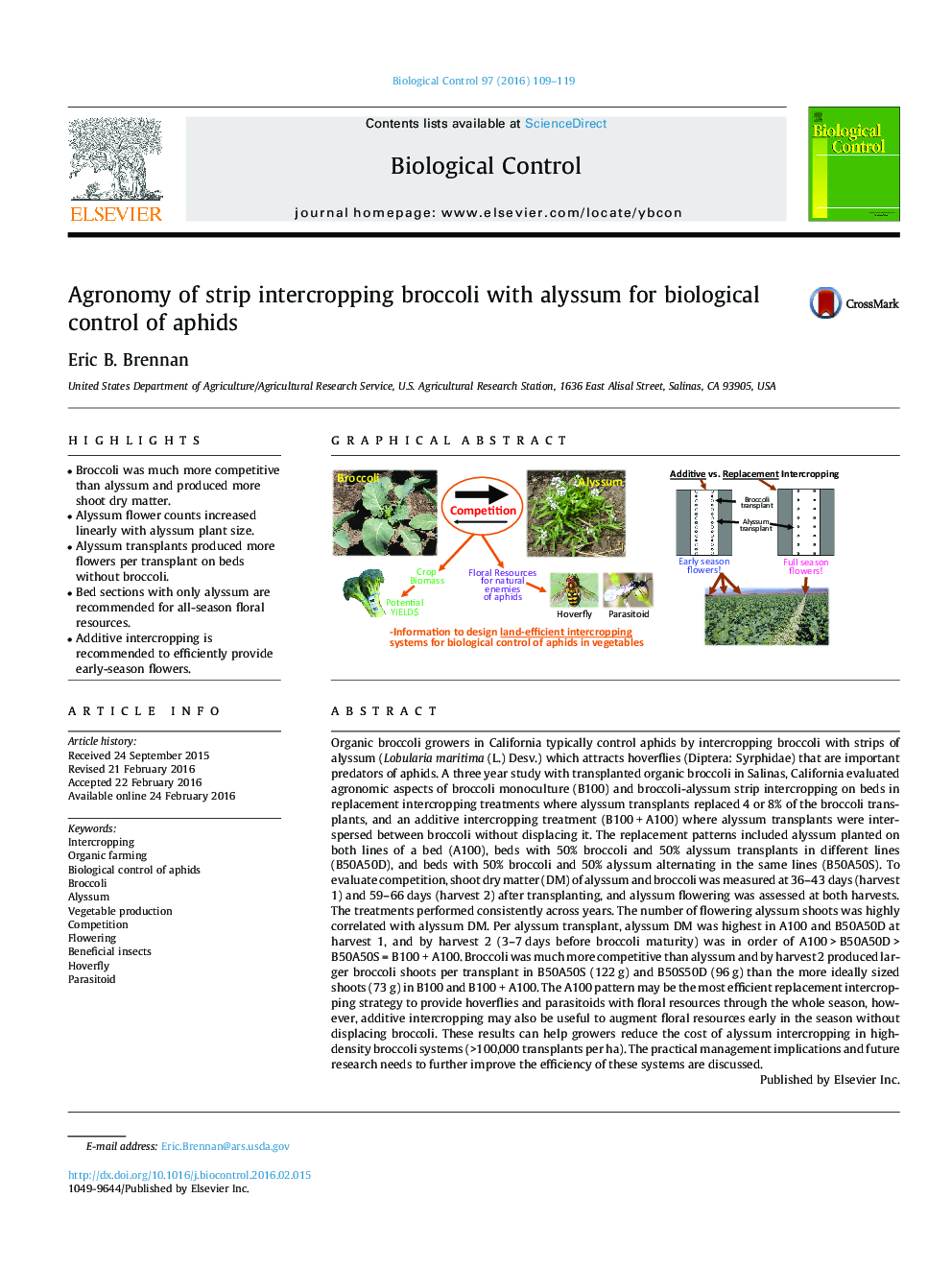| کد مقاله | کد نشریه | سال انتشار | مقاله انگلیسی | نسخه تمام متن |
|---|---|---|---|---|
| 4503692 | 1624237 | 2016 | 11 صفحه PDF | دانلود رایگان |
• Broccoli was much more competitive than alyssum and produced more shoot dry matter.
• Alyssum flower counts increased linearly with alyssum plant size.
• Alyssum transplants produced more flowers per transplant on beds without broccoli.
• Bed sections with only alyssum are recommended for all-season floral resources.
• Additive intercropping is recommended to efficiently provide early-season flowers.
Organic broccoli growers in California typically control aphids by intercropping broccoli with strips of alyssum (Lobularia maritima (L.) Desv.) which attracts hoverflies (Diptera: Syrphidae) that are important predators of aphids. A three year study with transplanted organic broccoli in Salinas, California evaluated agronomic aspects of broccoli monoculture (B100) and broccoli-alyssum strip intercropping on beds in replacement intercropping treatments where alyssum transplants replaced 4 or 8% of the broccoli transplants, and an additive intercropping treatment (B100 + A100) where alyssum transplants were interspersed between broccoli without displacing it. The replacement patterns included alyssum planted on both lines of a bed (A100), beds with 50% broccoli and 50% alyssum transplants in different lines (B50A50D), and beds with 50% broccoli and 50% alyssum alternating in the same lines (B50A50S). To evaluate competition, shoot dry matter (DM) of alyssum and broccoli was measured at 36–43 days (harvest 1) and 59–66 days (harvest 2) after transplanting, and alyssum flowering was assessed at both harvests. The treatments performed consistently across years. The number of flowering alyssum shoots was highly correlated with alyssum DM. Per alyssum transplant, alyssum DM was highest in A100 and B50A50D at harvest 1, and by harvest 2 (3–7 days before broccoli maturity) was in order of A100 > B50A50D > B50A50S = B100 + A100. Broccoli was much more competitive than alyssum and by harvest 2 produced larger broccoli shoots per transplant in B50A50S (122 g) and B50S50D (96 g) than the more ideally sized shoots (73 g) in B100 and B100 + A100. The A100 pattern may be the most efficient replacement intercropping strategy to provide hoverflies and parasitoids with floral resources through the whole season, however, additive intercropping may also be useful to augment floral resources early in the season without displacing broccoli. These results can help growers reduce the cost of alyssum intercropping in high-density broccoli systems (>100,000 transplants per ha). The practical management implications and future research needs to further improve the efficiency of these systems are discussed.
Figure optionsDownload as PowerPoint slide
Journal: Biological Control - Volume 97, June 2016, Pages 109–119
